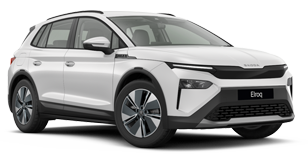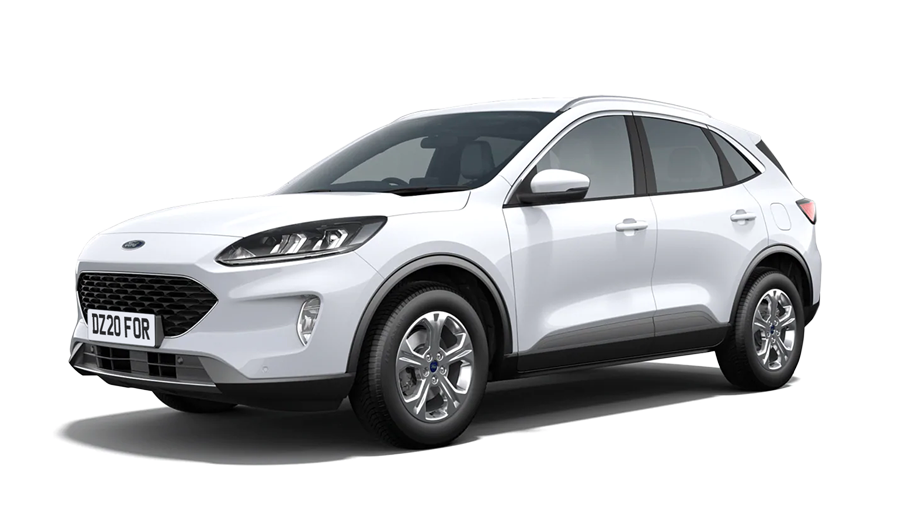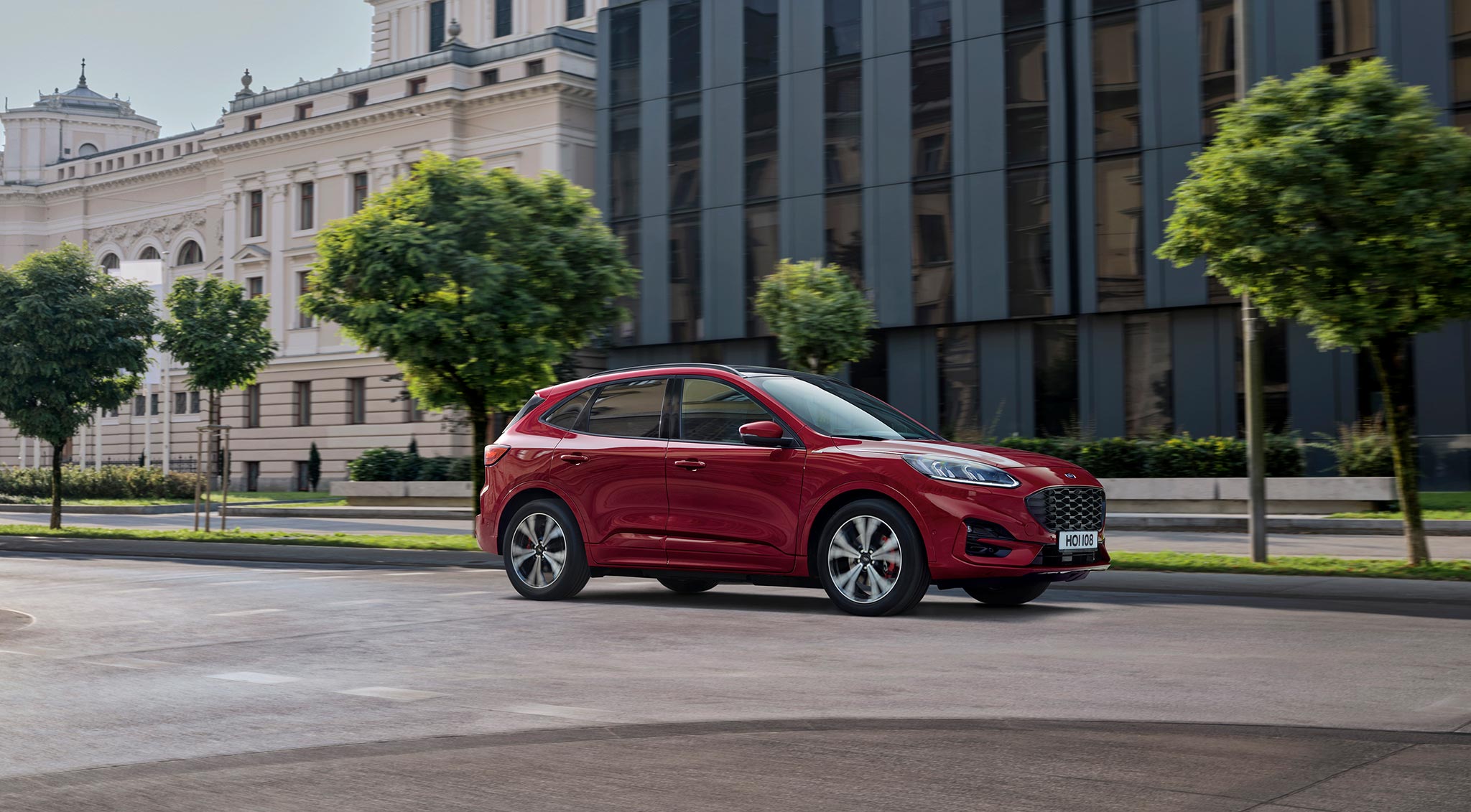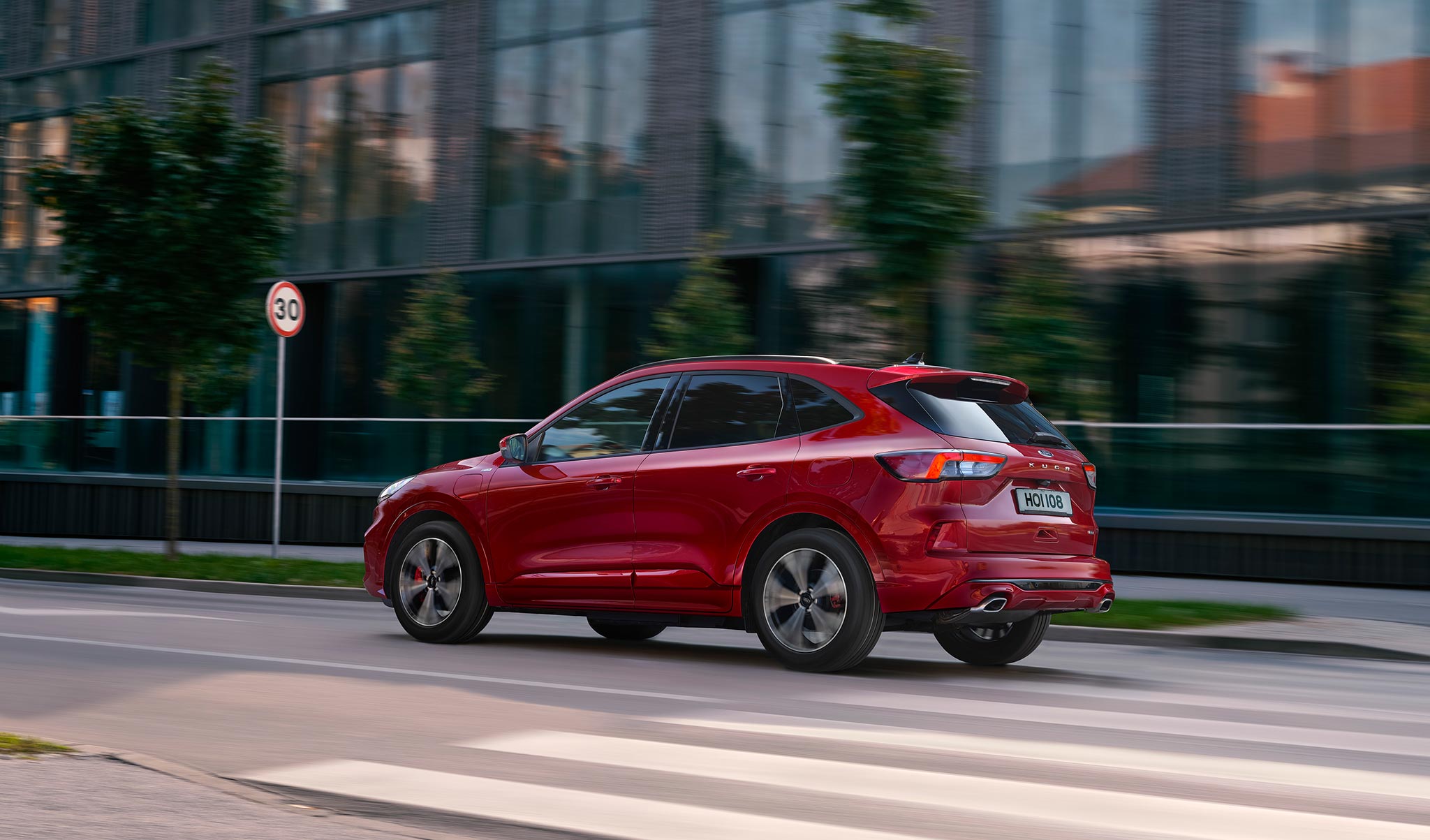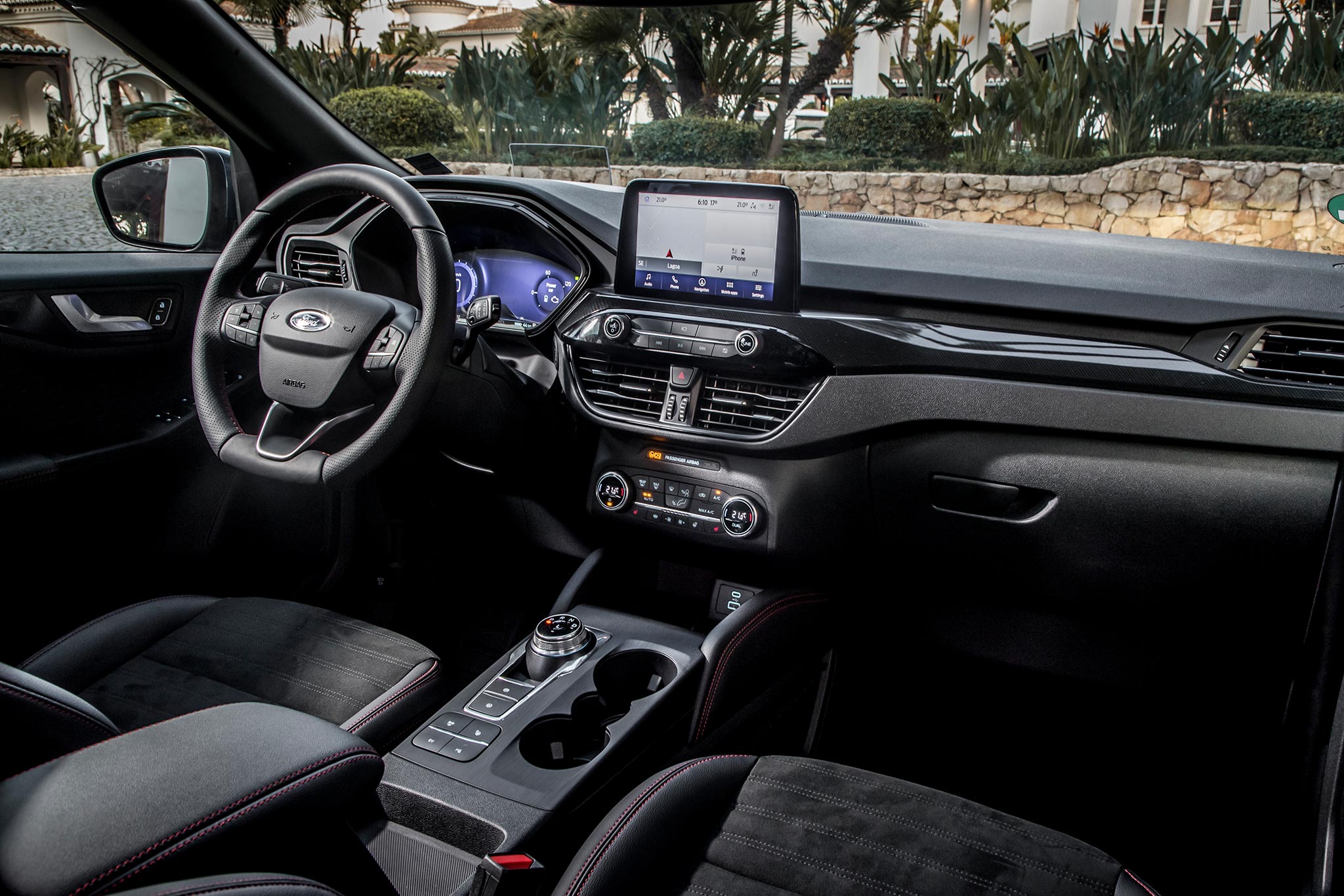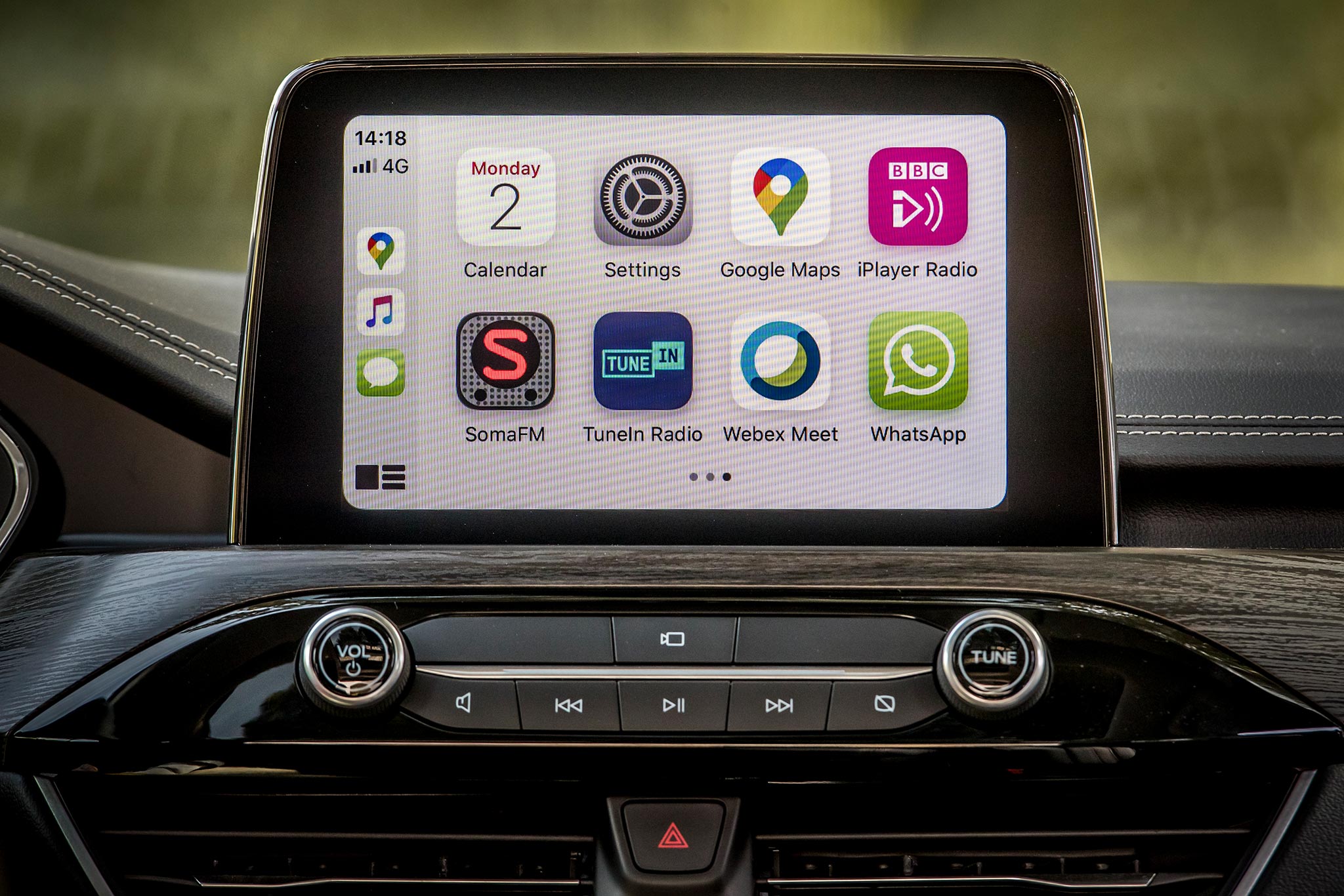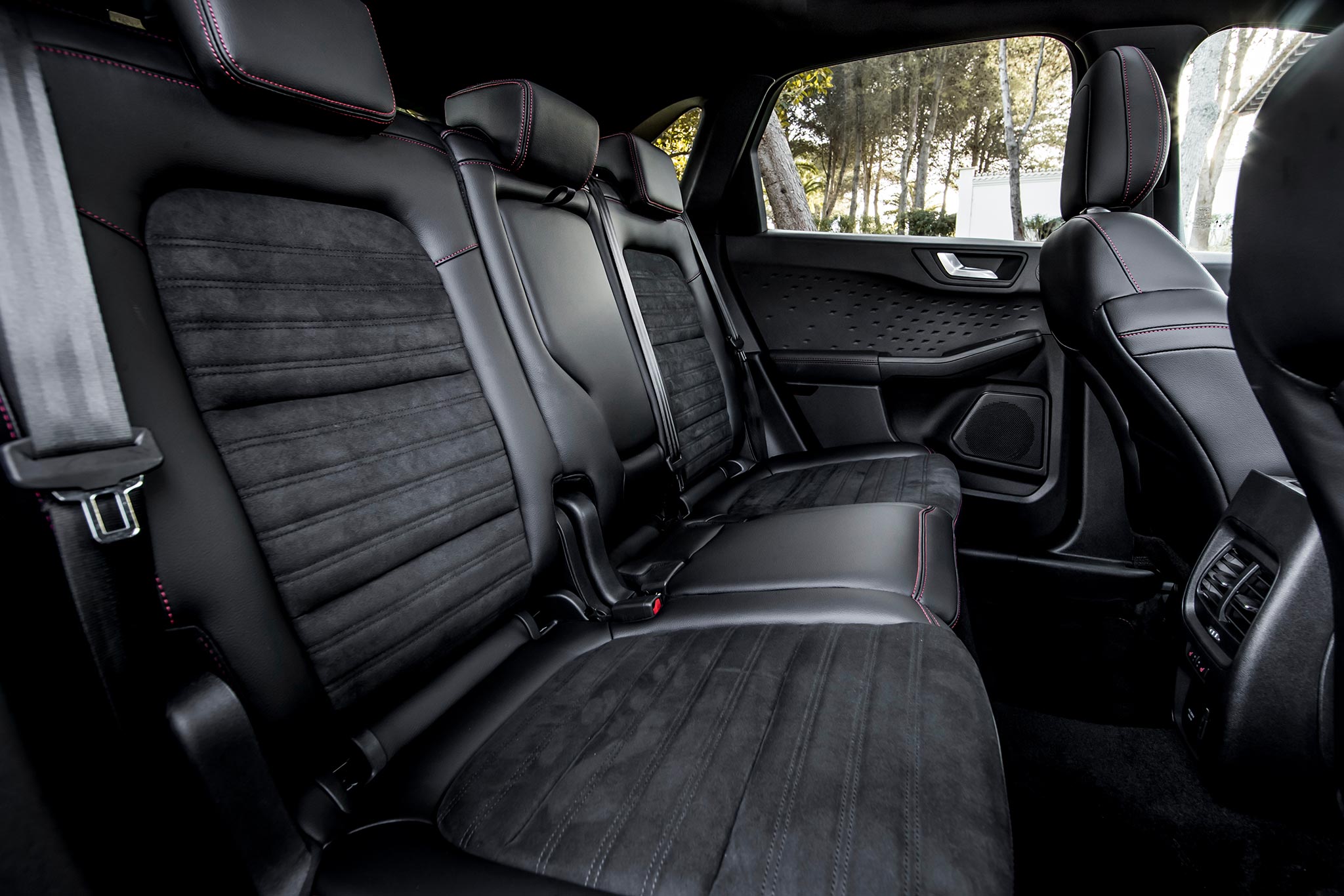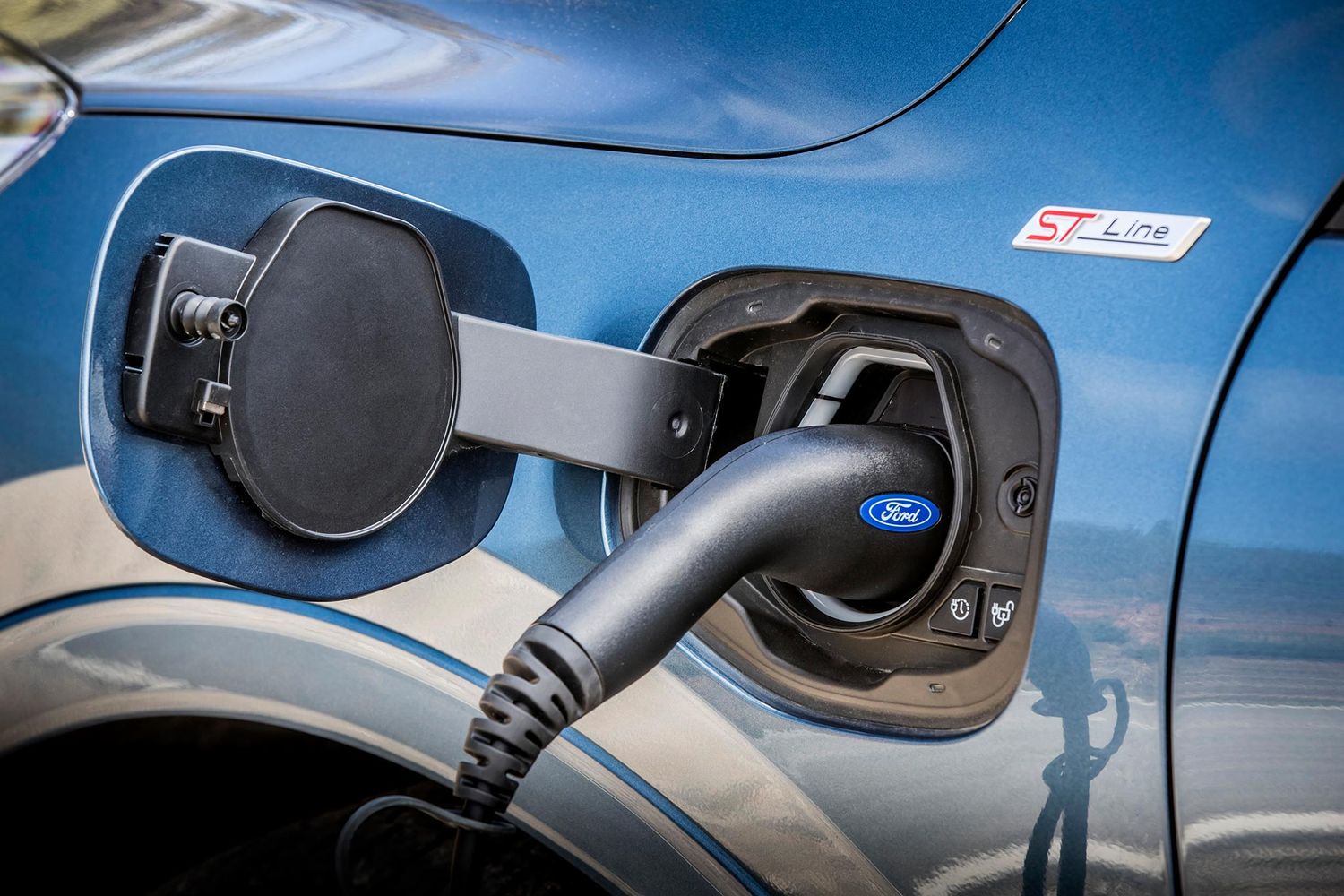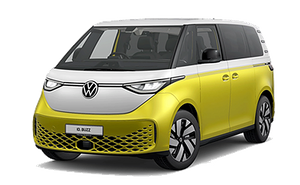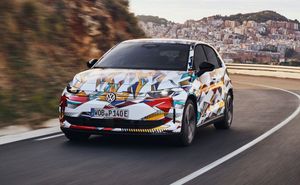Range
If you start off your journey with a full battery, the Kuga has an electric-only range of up to 41 miles going by official WLTP figures. That’s not much by the standards of a full-on battery EV such as the Renault Scenic E-Tech but will be plenty to get the average commuter to work and back without having to use any fuel. The Kuga will do up to 85 mph on battery power alone, too, so you really won’t have to use the petrol engine at all on most journeys if you have charge.
We know what you’re thinking, though – those official figures are as fictional as a Harry Potter plot. But the Kuga really does seem to get close to them in our experience, which is not something you can say about every PHEV. We'd expect to see around 35- to 40 miles of electric running depending on conditions. Perhaps even more surprising is that the 2.5-litre petrol engine proved very economical when we tested the car, managing around 55mpg when we recorded the fuel efficiency after the battery was depleted. That's usefully better than the economy you'll get in the Tucson or Sportage PHEVs, which we found did more like 40mpg after the pure electric running was used up.
Battery
The Kuga's 14.4kWh lithium-ion battery is competitive with most rivals, with a decent amount of capacity for a car like this. Drivers can choose when and how to deploy battery power using EV Auto, EV Now, EV Later and EV Charge modes. When the battery reaches its lowest state-of-charge, the Kuga automatically reverts to EV Auto mode – supplementing petrol engine power with electric motor assistance using recaptured energy for optimised fuel-efficiency.
Charging
The key to cars like the Kuga PHEV making financial sense is to plug them in, of course. The Kuga’s charge port is on the passenger side front wing and can connect to either a wallbox or a three-pin plug. The former is the fastest, although the Ford can only accept power at 3.6kW rather than the faster 7kW supplied by most dedicated domestic chargers. A full charge takes around three and half hours.
Plug it in using a standard three-pin socket and the Kuga will take seven hours to charge fully, which will still be fine if you are topping up the battery overnight at home or during the day in an office car park while you are working.





